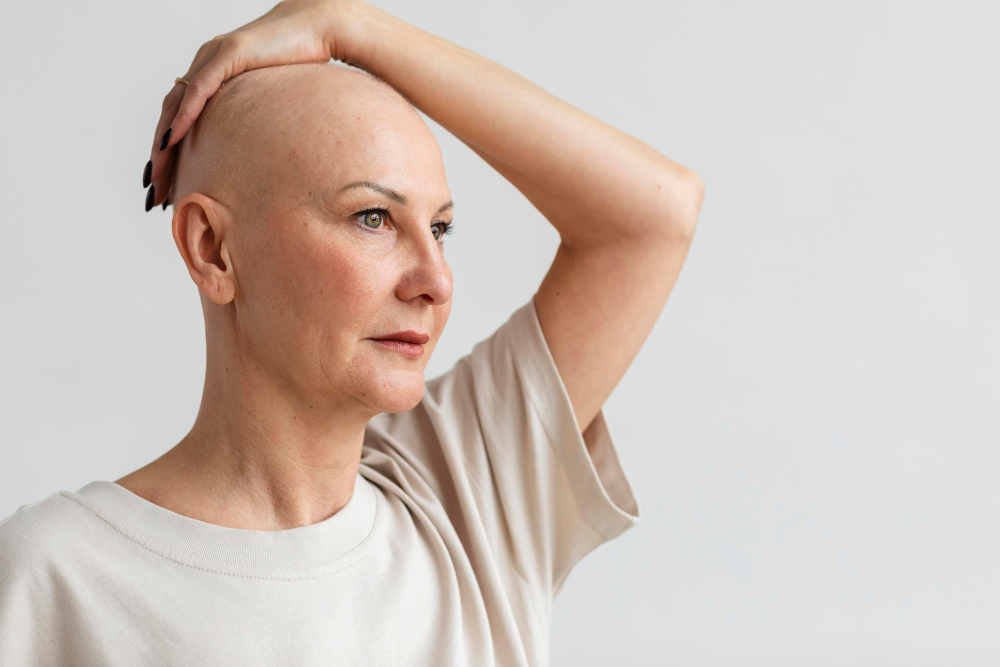Alopecia, or hair loss, is one of the most visible and distressing side effects of chemotherapy. While this effect is generally temporary, it can have a profound psychological impact, as hair is often associated with our identity and self-esteem.
Why Does Chemotherapy Cause Hair Loss?
Chemotherapy drugs are designed to target rapidly dividing cells, which is typical of cancer cells. However, other cells in our bodies, such as the hair follicles responsible for hair growth, also divide rapidly. Thus, during chemotherapy administration, hair follicles can be affected, leading to hair loss.
How to Care for Your Scalp During Chemotherapy?
Gentleness is essential. Use a mild shampoo and conditioner to nourish and moisturize your hair. When drying, avoid hairdryers, which can be too harsh, and gently pat your hair with a towel.
The Importance of Vitamins and Minerals
Alopecia is not only caused by chemotherapy. A deficiency in essential vitamins and minerals, particularly proteins and iron, can also result in hair loss. Ensure you have a balanced diet with an adequate protein intake. To increase your iron intake, incorporate foods such as red meat, liver, clams, anchovies, and sardines into your diet.
Maximize Iron Absorption
To optimize iron absorption, pair these iron-rich foods with sources of vitamin C, such as broccoli, oranges, and kiwi. Additionally, limit your tea consumption, as it can reduce iron absorption by your body.
The Future of Chemotherapy-Induced Alopecia
Prevention Research is ongoing to develop more effective methods to prevent chemotherapy-induced hair loss. These advancements offer hope for better management of the aesthetic side effects of cancer treatment.
In conclusion, while hair loss is a common side effect of chemotherapy, measures can be taken to manage this situation. Gentle scalp care and a nutrient-rich diet can help minimize the impact of hair loss and promote healthy hair regrowth after treatment.
References:

